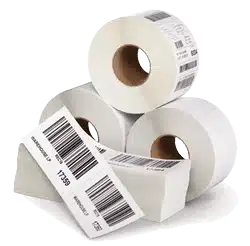
- Goods are unloaded from delivery truck.
- Delivery person provides the copy of purchase order to warehouse staff. Warehouse staff scans the purchase order barcode to check if it’s an expected replenishment order.
Barcode screen sequence:
a. Start screen of mobile scanner is shown below, Menu 1. Distribution is pressed.
b. In next screen, the document number can be entered manually or the barcode scanned.
c. Result is shown in next screen with details. This PO can be processed by clicking “Receive” button.
Barcode screen sequence:
a. He scans the material, the mobile application, immediately triggers a validation if the product scanned is the product in the purchase order number record in the WMS system. If the material scanned is wrong, then an error is shown on the screen. He then scans the destination bin label to determine if the destination bin is according to the instructions provided in the handheld. He then enters the quantity that the application also validates. Once he’s done, he clicks NEXT button.
b. He is taken to the next screen and he’s requested to finally confirm he’s done with receiving the item, before the entry is finally posted to the WMS system database. This step may also trigger automatic posting to financial books by increasing the inventory stock account.








